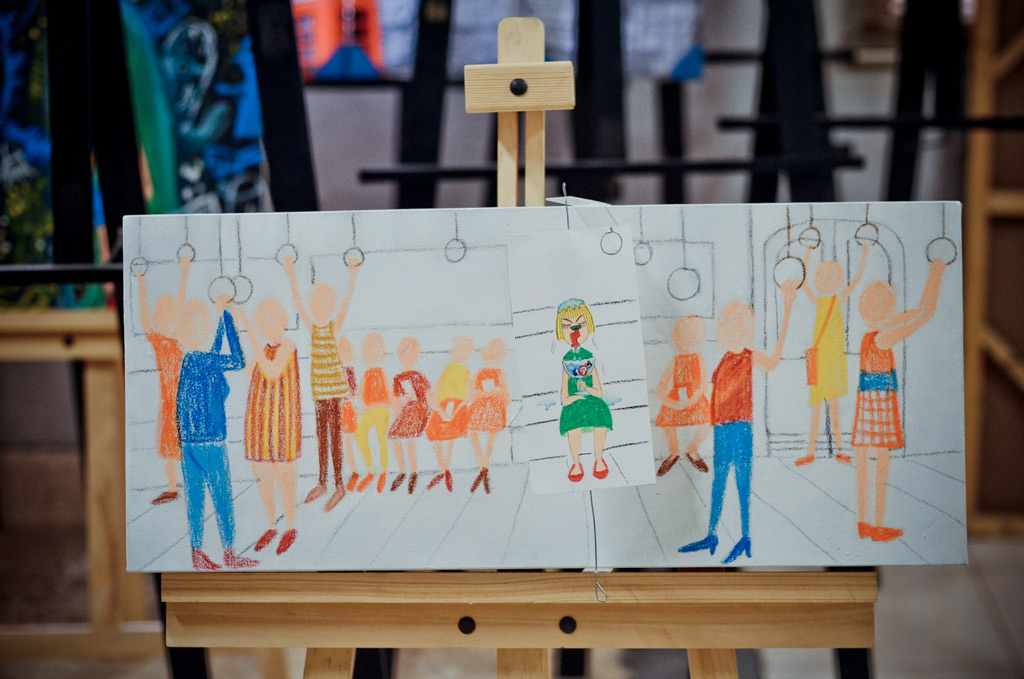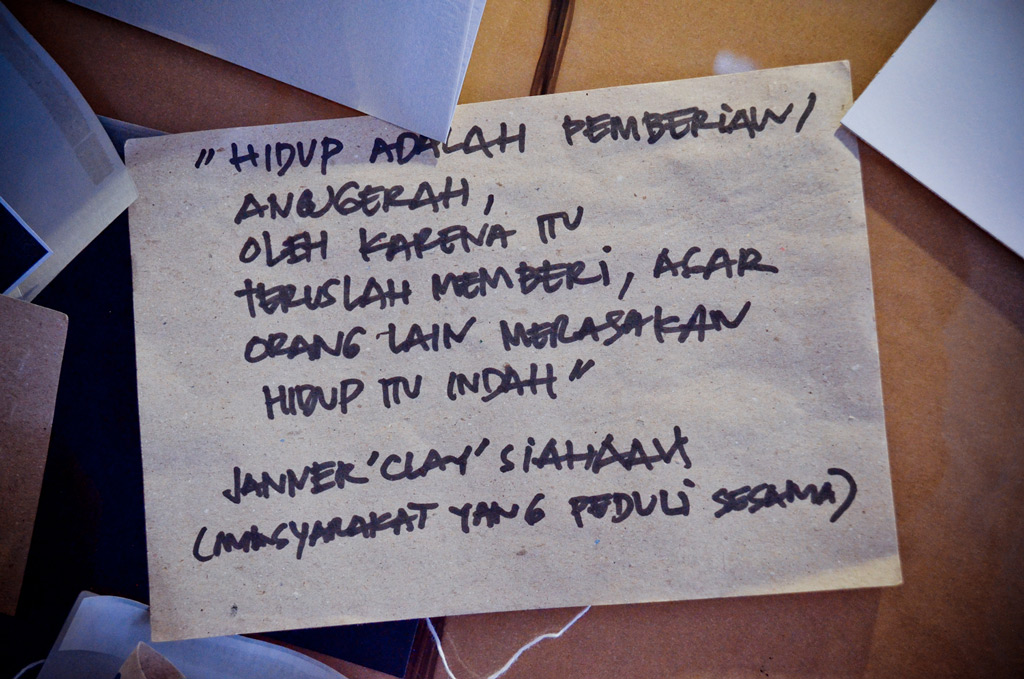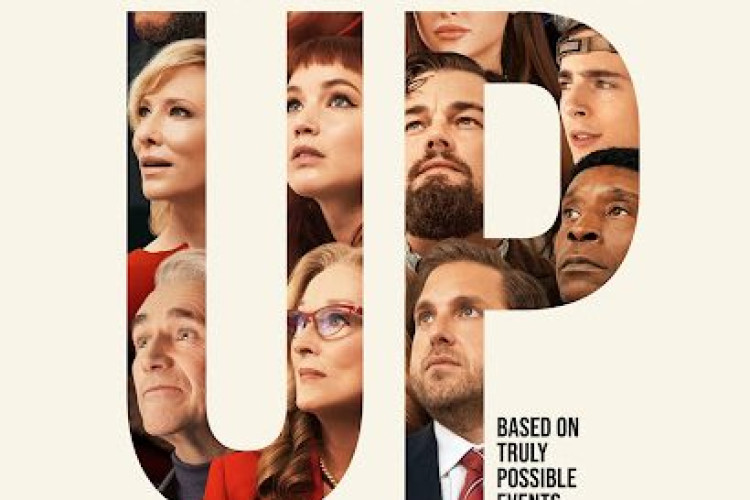Education Through the Arts with Monika Irayati
Mariati Galatio (M) talks to Monika Irayati (MI) of Erudio School of Art.
by Ken Jenie




















M
What was your background before you started Erudio School of the Arts, and what made you decide to create this school?
MI
My background has nothing to do with art, my major in college was accounting. After graduation, just like the standard cycle of life dictates, I had to find a job. I worked a corporate job for 14 years, my last job was in Holsim Indonesia. After 14 years, I came to a realization that I was in a state of confusion for all those years.
M
Was the job not fulfilling?
MI
It was just very regular, and I was working to survive, because I needed money to survive. Back then I accepted the situation as it was, but then 13 years into my job a friend asked me “what do you really want to do with your life?” and all I can say was that “my life is as it is.” To cut the story short, I was 36 years old and started to ask myself what I really wanted to do with my life.
I began questioning, trying to find what my interests are. I love reading, but I do not love to the degree that I wanted to pursue it, I like music only as a casual listener. I didn’t have many hobbies, and couldn’t figure out what my passion was. I asked people to coach me and tell me what I am like to find out what I would should do.
One of my friends told me, what I like to do was gather my nephews and nieces, and daydream with them – use our imaginations. I really did like to make believe with them, but didn’t realize that was my passion. My husband enjoys visual arts, and suggested I start something with children using the arts.
So about 8 years ago, as I was in that confusion, I started “Picture Me,” a school where children can explore as well as find out who they are and what they want to do with their lives. I wanted them to ask themselves what they want to do with their lives early on, rather than go through a crisis of identity as adults. That is basically where I started. I was still working, and started holiday programs for children to storytell through photography.
M
Picture Me was a photography workshop?
MI
The medium was photography, but the goal was for them to learn storytelling. As I was developing this program, my son was in 4th grade. He always enjoyed drawing, and one day I looked at his illustrations and asked what it was about. He replied that it was stories about his life and experiences. That was when I realized that a children needs an outlet, and one of them was visual arts. I believe Picture Me started around 2006 or 2007.
M
It was an after school – type of program?
MI
It was an enrichment program they could enroll after school. Children from the age of 7 to 12 would tell stories about their families. We made exhibitions; I believe we have done 3 photography exhibition so far.
Picture Me evolved over time. We first started with photography, and then experimented with animation, comic books, games – any media the children would be comfortable with. When my child was about to enter high school I asked him what he wanted to do with his life, he replied “I want to draw, mom.” As we were looking for a school, it was then I realized that it was difficult to find a school that could accomodate my child’s interest. There were art high schools in Yogyakarta and Bandung but they were too far away, and he didn’t want to enter a vocational multimedia school. As I did my research I stumbled on a school in Singapore called School of the Art (SOTA), whose program starts with junior high school.
M
That school is new, I believe.
MI
Yes, it is relatively new. I believe they started about 3 years ago. When I first saw it I thought to myself how cool it would be if my child was in that school. But then I thought “why send my son to Singapore to study art, when Indonesia has such a strong tradition of art.”
Singapore is designed, as their resources are limited. Why was SOTA established there? Because the creative industry is the future of the country, it is a matter of the country’s survival. So now I wondered why does Singapore have a SOTA, but Indonesia doesn’t?
M
Doesn’t Indonesia have schools of arts?
MI
What we have are vocational art schools, and they train their students to be labourers.
M
And the reasons you just told us are why Erudio School of the Arts was established?
MI
Yes, from the need of such as school, my son’s personal needs, to my working on Picture Me culminated with this project. We started to think about how we can create an art school at the 9th-12th grade level.
This first problem we encountered was the fact that we did not have art backgrounds, which, if you think about it, can make people question our credibility. People do ask this question, and I answer them truthfully that, to me, it is a personal mission because I experienced the difficulties of finding such a school for my child.
We started to visit the creative industry – advertising agencies, design houses, animation studios – and asked them what they needed. They replied that even a college graduate would come to them but many did not have “soul.” In terms of technical proficiency they would be top notch, but do not have the creativity.
We then went to different schools – Institut Teknologi Bandung, Binus University, Trisakti, Intitut Kesenian Jakarta – and asked them the same question. The general reply all of the schools gave was that out of the hundreds of students learning the arts, only about ten percent of the students truly belong there. Many of the students take the major either because their friends suggested they should take the arts or because it is trendy. The schools do not have the time to teach the students to learn how to “see” or “think” – so that is what is missing in the students.
We then went to art communities such as Ruang Rupa and presented them with our vision to ask for their help, because, I was honest, I would not be able to create or run this school without their support. Luckily, they were very supportive and enthusiastic of the idea.
So finally, riding on the positive responses and a bit of courage we decided to create the school.
M
What were the problems you faced when you created the school?
MI
The stakeholders, as in the children’s parents, were the biggest challenge because had to convince them that a school of art was serious and not a place where children play games. We decided that we needed a credible partner who can show that we have the necessary credentials to run the school – that is how our partnership with Edexcel, Pearson Education came about. We use a UK curriculum and have an international certification.
M
How long has the school been around for?
MI
This is our second year.
M
From your observation, how have the students responded to the school?
MI
It is probably best to ask the students that question, but I believe that they are happy. For many of them the school is heaven, because most of the students enrolled in the school chose the school. Often times the kids are the ones who convince their parents to be in this school.
When the students first arrived, I wondered what kind of children they were. I was happy to know they were good students academically and made the personal choice to enter the school.
M
Could you tell us how Erudio School of the Arts teach the high school curriculum to students?
MI
Firstly, I need to explain the basis of the school’s method of teaching, which is democratic learning. This goes back to our, as in the founders of the schools, frustration with the current education system. The general education climate does not help create an environment where the kids want to learn, kids generally just want good grades. What’s in a grade? When you die, you will not be known for your grades, but what you have contributed in your life. This was the frustration we experienced, and it inspired us to find the method of education that best fitted our views.
We found the answer in Ki Hajar Dewantara [Indonesian independence movement activist, politician, a major figure in Indonesian education], who expressed an amazing understanding of education. He onced side something along the lines of coercing children is the same as violating their spirituality – that a child has to have their own initiative to learn, and it isn’t so in Indonesia. Children naturally want to learn, we adults are the ones who are making them not want to.
There is a school in England called Summerhill school, which is a 100-percent democratic school. The students can choose what they want to on any day – there’s even facilities built so the students can daydream. I was intrigued by the school and asked them where I can learn the school’s concept. I was referred to a website called AERO (Alternative Education Resource Organization) where I found tens of thousands of members, schools who believe in the value of a child’s interest. This was when it was decided that we were going to approach education in this manner.
For the teachers… the success of a teacher is proved by the students no longer needing their guidance, so in Erudio the teachers are here to help the students help themselves. This removes much of the teacher’s authority – so the students do not study just because their teachers told them to.
For the students, they have the right to choose whether or not they want to attend class as long as they understand the consequences, and are within the school’s premises.
M
How do you select the teachers?
MI
As we are working with Edexcel, we are using a UK curriculum and need teachers fluent in English. We faced difficulties finding teachers that are in sync of what we do and how we want the school to function. We were finally faced with a dilemma, whether we hire teachers who know how to teach, or teachers with great credentials – we decided on the first.
Finding the teachers can be difficult at times. For teachers involved in the arts it isn’t too difficult, there are individuals from ITB, IKJ, etc. It is most difficult to find teachers who focuses on the academic side of the spectrum. Our math teacher is from Serrum community, who helped us translate the required math curriculum into a lesson plan. They also helped us with the sciences.
M
Are the lessons in English?
MI
The written material are in English, but how they are taught we let the teacher decide – what is most comfortable for them.
M
The teachers are young, for the most part?
MI
With our system of education, we have the ability to find teachers who are suitable for our school. For example, our Indonesian language teacher is quite young and a scriptwriter, so he is very much in the literary world. Most of the teachers here teach in public schools as well.
M
They teach differently here than in other schools?
MI
Yes.
It is quite difficult to find the right teachers, though. Teacher is a word very much associated with authority, and in our school where the teachers rights are equal to the students – that sense of authority is stripped away. Finding teachers with the same vision is difficult.
M
Do you teach here as well?
MI
Yes, I teach social skills. Specifically project management – how they can manage their time and available resources.
M
As it is a high school, how do you meet the demands of the examination requirements?
MI
If you would ask the success rate of the Erudio, we are a new school so I cannot say just yet, but based on the references of the other schools who run similar programs, the students do just fine. In the third year of their studies they return to a drill-based education, because at that point we must meet the standard education requirement, which is test-based.
Parents ask how we discipline our students, and I reply that we do not believe in a conditioned discipline, we want the discipline to come from within. It is best exemplified when our teacher is a little late, he would enter a class where the students are already working on their project.
M
In general, what do you believe is lacking on Indonesia’s education system and how do we improve it?
MI
To be honest, I am not really in the position to be able to critique the education system. I can only talk about it from a personal point of view. I am frustrated with the system in place as a parent and, after looking back at my youth, as a student. I do feel that this system needed to change, but then how do I do it? You can become an activist to advocate amendments at the MInistry of Education, but I didn’t choose this path. I decided that I would create a school, that was my way of improving education in Indonesia.
M
Where do you think is the direction of the education system here?
MI
I have the belief that every school, at the very basic level, tries to do good. With more and more institutions as well as people advocating for a better education – that can only lead to a betterment of the system. To better our children’s education, we do not have to wait for the government to make a change, we can initiate it ourselves.
There is a school called Master (Majis Terminal) in Depok, a free school for street children run by a Mr. Nur Rohim, who is an inspirational figure. We were hesitant about Erudio at the time, wondering whether or not we would able to make the school successful. I spoke to Mr. Rohim and told him about the difficulties of getting the permission from the Ministry of Education. He said to me that if I waited and worried about the bureaucracy then I will never create the school, that I already had the will to help children – he told me I had make the school!
He probably doesn’t consider himself an inspirational figure, but what he said to me and how he said it to me was a great push to establish Erudio.
M
Final question, what should we expect happening at Erudio?
MI
We hope in the future to expand our curriculum to the Junior high school level, maybe even grade school. We would like children to think, to view, to understand themselves – the strengths as well weaknesses, and I hope they will be able to live a fulfilling life.











